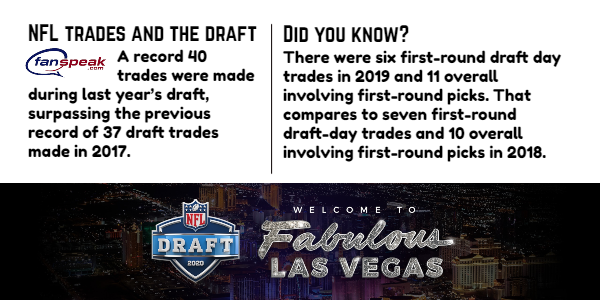Mock Draft Tips: Making the case for and against drafting for position of need

As part of an occasional series, Fanspeak will offer tips and best practices for its wildly popular and first-of-its-kind On The Clock draft simulator.
Today’s topic: How do you address glaring needs on your team in the draft?
Smart teams use free agency to fill in the gaps where needed.
That way, there are no glaring holes that need to be addressed in the NFL draft, theoretically allowing the team to take the best player available in every round.
But that’s not always possible.
Or practical.
Your personal draft strategy is tested every time you bypass a player at a position of need – who could potentially walk in as a Day 1 starter – over a player who’s simply ranked higher on your big board.
And while taking the best candidate to fill a job opening is usually the smart move in all walks of life, that same strategy when used during the draft can lead to an embarrassment of riches at a particular position.
And that’s not necessarily a good thing, as it will have future salary cap implications while limiting the playing time for the players in that position.
In other words, the BPA approach isn’t necessarily the smart approach.
Making the case for drafting for need
“If I don’t take Player X in the first round, can I still get a starting-caliber player at that position in another round?”
That’s what happens to teams that have holes to fill.
When using Fanspeak’s On The Clock NFL draft simulator, you have to consider tier gaps – especially if your team is in desperate need at a particular position.
The issue could come up this year with the offensive tackle position. It’s top-heavy, with anywhere from five to seven who could be taken in the first round. The Fanspeak-Jake big board, for example, has 12 OTs among its top 94 players, with six in the top 30 and seven in the top 40.
I understand NFL teams draft BPA *according to need*, but the way CB looks for the Dallas Cowboys, it looks like they'll be picking by need and need alone. Can they afford to skip CB in the 1st round? What happens if no CBs are worthy in the 2nd? #CowboysNation #CowboysDraft
— Reid D Hanson (@ReidDHanson) March 10, 2020
That means, if your team needs a starting-caliber tackle and you’re drafting with the Fanspeak-Jake big board, then you better take one by late in the first round.
But what if you’re that eighth- or ninth-team in need of a tackle in a seven-deep OT class?
If your team risks it and says “I’m not over-drafting a player just because we need someone at that position” and tries to find an OT in the later rounds, your team might be out of luck.
Again, you have to consider the tier gaps. Taking a deeper diver in the Fanspeak-Jake big board shows another big gap in the offensive tackle rankings. Auburn’s Jack Driscoll is the line of demarcation as the No. 117 rated prospect overall. After Driscoll, the next-highest rated tackle is North Carolina’s Charlie Heck at pick No. 163.
Those tier gaps cause teams to go on a run at a position during the draft.
If you bypass a player at a position of need and what follows is a run at that position, then you might be left empty-handed when it’s your turn to draft again.
Making the case against drafting for need
Tennessee may be in this position this year, as offensive tackle likely moves to the top of the Titans’ needs list after right tackle Jack Conklin signed with Cleveland.
The question, though, is whether Josh Jones of Houston or Ezra Cleveland of Boise State are still there at pick No. 29 overall.
If not, do you pull the trigger on Georgia’s Isaiah Wilson? Kansas’ Hakeem Adeniji? Connecticut’s Matt Peart?
It’s how players like USC’s Austin Jackson wind up going in the first round every year: solid, probably starting-quality players but at questionable value for their draft slot.
And that’s where you see draft “busts.”
The 2018 draft by Seattle serves as a good example. That year, the Seahawks – a team that desperately needed a running back – drafted Rashaad Penny with the No. 27 overall pick in the first round. While Penny was thought of as an intriguing prospect, most analysts pegged him as a Day 2 or even Day 3 player, so the pick was widely criticized.
And while it remains to be seen if Penny can get his career on track, he’s the only player among the next 50 draft picks selected after him who has not started at least one game.
Our recommendation
There are risks either way.
Take a lower-ranked player maybe a round (or two) early, and you’re at least ensuring that you filled that position of need – but if that lower-ranked player doesn’t match or exceed expectations, then you might need to replace him again next year.
And if you bypass players who are ranked higher on your big board, you’re willingly passing up more talented players in favor of lesser talented players – and that will catch up to you, too.
Therefore, we don’t think it’s wise to force a pick just because he fills an immediate need.
There are other ways to build a roster other than the draft, so selecting players solely by taking positions of need isn’t a sound strategy.
Jake Rigdon covers the NFL draft for Fanspeak. He can be reached at jake@sydwriting.com.

